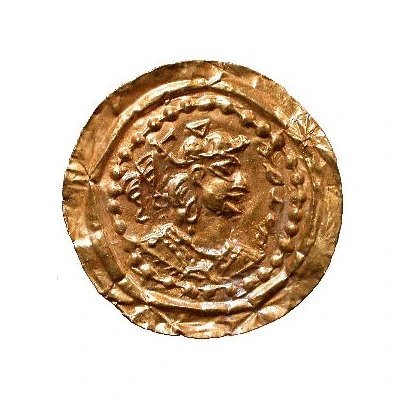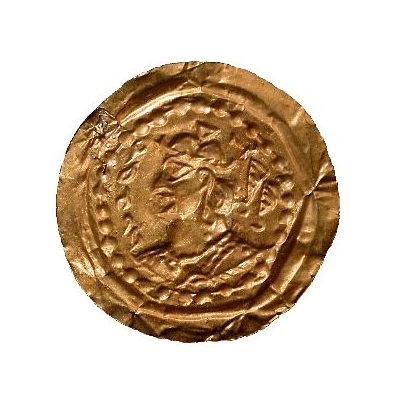


Denier Bracteate - Hephtalites hunnic tribes - Anonymous Gharwal
| Gold | 0.36 g | - |
| Issuer | Hephthalite Empire (Hunnic tribes) |
|---|---|
| Type | Standard circulation coin |
| Years | 500-700 |
| Value | Gold Bracteate |
| Currency | Drachm (408-670 AD) |
| Composition | Gold |
| Weight | 0.36 g |
| Shape | Round (irregular) |
| Technique | Hammered (bracteate) |
| Orientation | Coin alignment ↑↓ |
| Demonetized | Yes |
| Updated | 2024-10-10 |
| Numista | N#151111 |
|---|---|
| Rarity index | 100% |
Reverse
Uniface, crude
Edge
Plain
Comment
References:1. Bulletin of the Asia Institute(BAI), vol. 17, pp. 159 - 175(incl. five plates, pp. 168-172): Coins from Gharwal(Afghanistan), by Klaus Vondrovec(includes bracteates)
Gold imitations of Sananian and Byzantine coins have been found in tombs in Guyyan, Ningxia Province, China between 1982-87 within five tombs dating to the late 7th century. Tomb tablets described the occupants to have descended from Sogdian traders living in the area. Gold imitations of Byzantine solidi have also been found in the Astana cemetery in Turfan, Xinjiang Province, China dating from the mid-6th to mid-7th centuries. Often these gold imitations are uniface, thin, light weight bracteates and have been found across the Eastern Silk Road in burials. This example was found in Afghanistan and is the first we have seen in the Hunnic style.
Interesting fact
One interesting fact about this coin is that it was used as a form of currency during the Hephthalite Empire, which was a powerful empire that existed in Central Asia and parts of South Asia during the 5th to 8th centuries. The Hephthalites were known for their military prowess and their ability to create a vast empire that stretched from modern-day Afghanistan to parts of India and China. The use of gold coins like this one would have been a symbol of the empire's wealth and power.